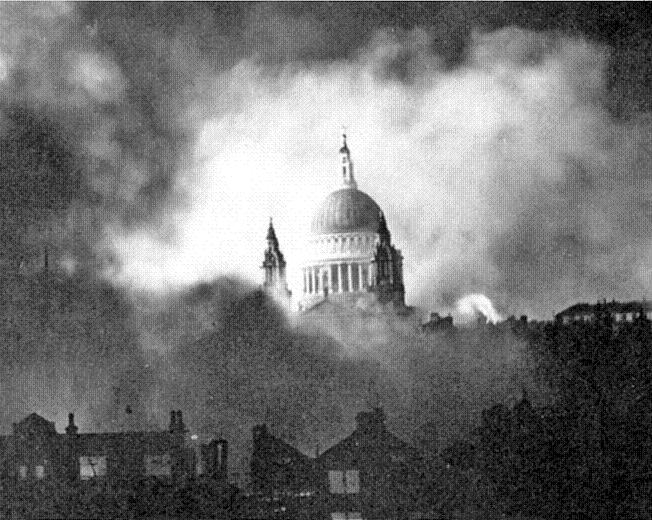This photograph, published in the Daily Mail in
December 1940 – showing St Paul’s towering
over the fires of the Blitz – was called by the
newspaper: ‘the
Greatest Picture of the War’.
It had symbolic meaning to the people at the
time - can you think what?

Why
was Source B published in the newspapers in December 1940?
Use Source B and your own knowledge to
answer the question.
Evaluation of an
Interpretation
(markscheme)
Part of a speech broadcast by Winston
Churchill on 27 April 1941
The British nation
is stirred and moved as it never has been at any time in
its long and famous history, and they mean to conquer or
to die. What a triumph the life of these battered
cities is over the worst that fire and bomb can do!
The terrible experiences and
emotions of the battlefield are now shared by the entire
population. Old men, little children, the crippled,
the veterans of former wars, aged women, the
hard-pressed citizen, the sturdy workman with his hammer
in the shipyard, the members of every kind of ARP
service, are proud to feel that they stand in the line
together with our fighting men. This, indeed, is a
grand, heroic period of our history, and the light of
glory shines upon all
Is the view given in
Source D an accurate interpretation
of people's attitudes to the Blitz?
Use Source D and your own knowledge to
answer the question.